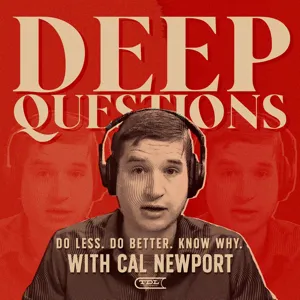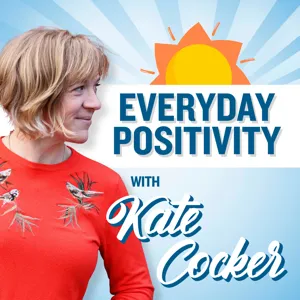Podcast Summary
Essential skills for developers: Time management, command line, and folder structure: Improving essential skills like time management, command line interface, and folder structure can save time, work more efficiently, and reduce frustration. Try using tools like Prismic for content management to streamline workflow.
Improving non-glamorous skills like time management, command line interface, and folder structure can significantly enhance a developer's life and career. These skills may seem mundane, but they can help developers save time, work more efficiently, and reduce frustration. In the discussion on Syntax, Scott Talinsky and Luis Boss talked about the importance of these skills and how they can make a big difference. They also mentioned Prismic, a content management system that can make editing website content easier for teams. Prismic is a new, next-gen CMS tool that works with popular frameworks like Node.js, React, Next.js, Gatsby, Vue, and Nuxt. It offers a smartly designed interface, RESTful API, and GraphQL query, making it a versatile option for developers. By focusing on these essential skills and using tools like Prismic, developers can streamline their workflow and make their lives as coders more enjoyable and productive.
Investing in non-coding skills enhances productivity and effectiveness: Developing non-coding skills like organization, data manipulation, and scripting can make your workflow more efficient and effective, freeing up mental energy for complex coding tasks
Improving non-coding skills can significantly enhance your productivity and effectiveness as a developer. These skills may not be as glamorous or flashy as coding itself, but they are essential for making your life easier and allowing you to focus on the more complex aspects of your work. During the discussion, the speaker shared his personal experience of avoiding certain non-coding skills in dance practice, such as improving bad folder structures or learning to use specific tools more efficiently. He noted that these skills can be distracting and take up valuable mental energy when trying to fix bugs or meet deadlines. The speaker also shared an example from his experience as a junior developer, where he was able to save time and effort by learning to convert data into a format that Magento required, rather than manually editing it in Excel. This experience highlighted the importance of developing non-coding skills, such as data manipulation and scripting, to make your workflow more efficient and effective. In summary, investing time and effort in non-coding skills, such as organization, data manipulation, and scripting, can help you become a better developer by freeing up mental energy and allowing you to focus on more complex coding tasks. These skills may not be as glamorous or flashy as coding, but they are essential for making your life as a developer easier and more productive.
Mastering command line skills and keyboard shortcuts: Improve productivity and efficiency by learning command line tools and shortcuts. Transferable skills for different code editors and essential for managing files on NAS servers.
Having a strong foundation in command line skills and keyboard shortcuts can significantly improve your productivity and efficiency as a developer. These skills might not seem exciting at first, but they are essential for navigating the file system, managing files, and performing common tasks quickly. The speaker shared his experience of being amazed by how much time and effort could be saved by using command line tools to convert file structures or rename files in bulk. He also mentioned that these skills are transferable across different code editors and can help you accomplish tasks more efficiently. The speaker even shared his personal experience of creating a command line poweruser course due to the common struggle developers face with basic command line tasks. In addition, using a command line for managing files on a NAS server, like Synology, is much quicker than using a graphical user interface (GUI). Therefore, investing time in mastering command line skills and keyboard shortcuts can make a significant difference in your development workflow.
Learning Keyboard Shortcuts Boosts Productivity: Mastering keyboard shortcuts can save time and enhance workflow in various coding environments. Practice and customize shortcuts weekly for optimal results.
Mastering keyboard shortcuts can significantly improve your productivity and efficiency in various coding environments, such as Versus Code or VIM. While the specific key bindings may differ, getting accustomed to using your keyboard for navigation, moving around files, and selecting text is crucial for speed and ease. Learning and practicing one new keyboard shortcut each week can help you build a strong foundation over time. Customizing keyboard shortcuts to suit your unique workflow can lead to even greater time savings. For example, in video editing, having a few essential shortcuts assigned to easily accessible keys can make the editing process feel like playing the piano. One valuable example given was the use of custom keyboard shortcuts for change case functions in Versus Code, which can save time by eliminating the need for deleting and rewriting text. The speaker also mentioned using Carabiner Elements to customize the caps lock key for change case functions. In summary, investing time in learning and customizing keyboard shortcuts can lead to noticeable improvements in your coding workflow, making your experience more enjoyable and productive.
Automatically generating prop types for React components: New tool saves time and effort by generating prop types for React components, improving code consistency and efficiency
A new tool called React PropTypes Generate can help developers save time and effort by automatically generating prop types for React components. The speaker, Scott, shared his frustration with the tedious process of manually setting up prop types, which involves importing and naming various components and type libraries. With this tool, developers can simply select their component, and the plugin will generate all the necessary prop types. The speaker also mentioned his transition to using TypeScript, which has more advanced prop types and code generation capabilities, making the process even more efficient for him. While some may view this as an insignificant improvement, it can lead to writing better and more consistent code. Additionally, the speaker mentioned the importance of communication and interpersonal skills and suggested checking out a previous episode on the topic. Lastly, he touched upon time management skills, emphasizing the importance of estimating and managing time effectively for completing projects and managing tasks.
Maximizing productivity during extended work sessions: Prioritize tasks, minimize distractions, and maintain good file hygiene to make the most of your time and increase productivity.
Effective time management is crucial for productivity, especially during extended periods of uninterrupted time. This means prioritizing tasks, such as focusing on courses, recording and writing code, and working on your product or business. It also involves using tools like apps and extensions to minimize distractions and maintain good file hygiene. Keeping your computer organized with clear file structures can help prevent clutter and make it easier to find what you need. By efficiently using your time and minimizing distractions, you can make the most of your opportunities and avoid wasting valuable resources. Additionally, having a system for managing temporary files and projects can help keep your digital workspace clean and focused. Overall, prioritizing tasks, minimizing distractions, and maintaining good file hygiene are key strategies for making the most of your time and increasing productivity.
Keep your computer organized with proper folder structure: Create specific folders for projects or categories, delete unused files, use apps for help, and automate processes to save time and reduce mental clutter.
Maintaining a proper folder structure on your computer is essential for staying organized and focused on your work. Clutter on your desktop and in your downloads folder can be distracting and lead to lost files. Instead, create specific folders for different projects or categories, and make sure to regularly delete unused files and empty the trash. Additionally, consider using apps like Clean My Mac and DaisyDisk to help manage and monitor your file storage. Lastly, creating utilities or scripts to automate the process of setting up new projects can save time and reduce mental clutter. Overall, taking the time to establish and maintain a well-organized folder structure can significantly improve productivity and efficiency.
Dedicated daily learning for growth: Invest time daily to learn new skills, identify areas for improvement, and make learning a priority for personal and professional growth.
Continuous learning and improvement are essential for personal and professional growth. The speaker shared their experience of setting aside dedicated time each day to learn new skills, especially when feeling inadequate or left behind in the workplace. They emphasized the importance of identifying areas of improvement and making time for learning, even if it means interrupting one's routine. While some may argue that stopping to learn something new can be a distraction, the speaker believes that the time and effort invested will save time and frustration in the long run. They also acknowledged that not all learning experiences will be productive, and sometimes it's necessary to abandon a rabbit hole and move on. The speaker concluded by encouraging listeners to assess the cost-benefit of learning new skills and reminding them to tune in for upcoming episodes on Syntax.fm.





